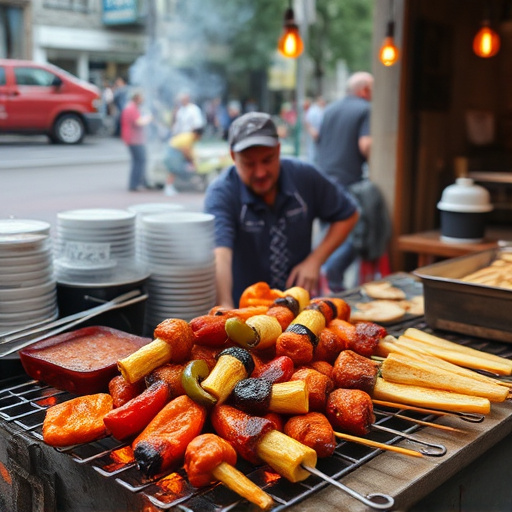Choosing high-quality, well-marbled cuts like brisket or pork shoulder and slow-cooking them over low heat is key for an authentic southern-style chopped barbecue. Seasoning with a balanced spice rub enhances the meat's flavor. Smoking or grilling methods add depth to the taste. Chopping the meat into 1/2-inch cubes ensures even cooking. Traditional tomato-based sauces or modern blends can be used, and classic sides like potato salad and coleslaw complement the main dish. Store leftovers safely in airtight containers for up to 4 days in the fridge or 3 months in the freezer.
Unleash the flavors of authentic Southern style chopped barbecue with this ultimate guide! Discover the secrets behind creating the perfect tender, juicy meat and savorable sauces. From selecting premium meats to mastering the art of chopping, we’ll navigate you through traditional and modern techniques. Learn the nuances of smoking vs. grilling and explore companion side dishes that complete the meal. Get ready to impress with this classic chopped BBQ recipe, perfect for any occasion.
- Selecting the Right Meats for Your BBQ
- The Essential Spices and Rub for Flavor
- Cooking Method: Smoking vs. Grilling
- Techniques for Perfectly Chopped Meat
- Sauces: Classic vs. Modern Preferences
- Accompanying Side Dishes for a Complete Meal
- Tips for Portioning and Serving
- Storing and Reheating Your Chopped BBQ
Selecting the Right Meats for Your BBQ
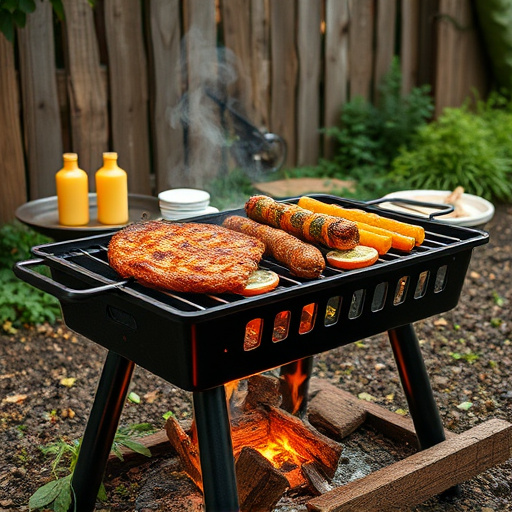
When it comes to a classic southern-style chopped barbecue, choosing the right meats is half the battle won. Opt for high-quality cuts like brisket, ribeye, or pull pork for an authentic, juicy experience. These meats have abundant marbling and fat content, which ensures they stay tender and flavorful when slow-cooked. For a true Chopped BBQ Recipe, look for meats that are at least 20% fat to lock in the moisture, enhancing every bite with richness and depth.
The cooking method also plays a significant role. Slow-cooking these cuts over low, indirect heat allows them to break down, resulting in tender, melt-in-your-mouth meat. Whether you’re smoking it low and slow or braising it until it’s tender, selecting the right meats will make all the difference in achieving that perfect, mouthwatering chopped BBQ texture and taste.
The Essential Spices and Rub for Flavor

The key to a mouthwatering chopped BBQ recipe lies in the blend of spices and rub used to season the meat. A classic southern style chopped barbecue begins with a generous coating of a well-balanced spice mix, designed to enhance the natural flavors of the pork shoulder or beef brisket. The rub typically includes essential spices such as salt, pepper, garlic powder, and paprika, each adding depth and complexity to the final dish. These foundational spices are often combined with additional flavor boosters like cayenne pepper for heat, mustard seed for a tangy note, and dried herbs like thyme or rosemary for an aromatic touch.
Creating a rub is an art, requiring a delicate balance of flavors that can be adjusted according to personal preference. For the best results, apply the spice blend liberally to your chosen meat before slow-smoking it. The combination of heat from the smoker and the deep penetration of spices ensures every bite of your chopped BBQ is infused with a rich, savory profile—a true testament to the power of these essential ingredients in transforming a simple cut of meat into a mouthwatering culinary masterpiece.
Cooking Method: Smoking vs. Grilling
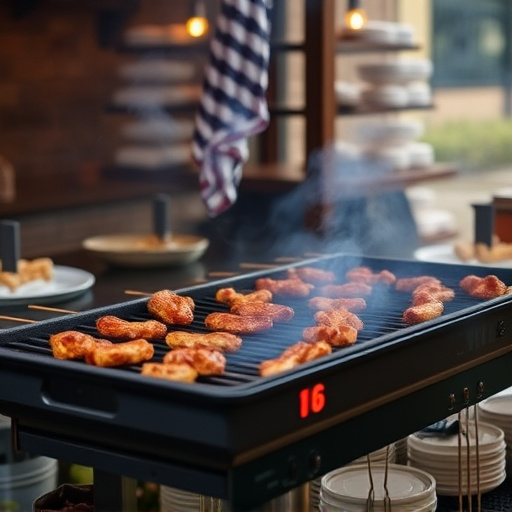
When it comes to cooking a classic southern-style chopped barbecue, the method you choose can significantly impact the final result. Smoking and grilling are two popular techniques, each offering unique flavors and textures. Smoking, often preferred for its rich, smoky taste, involves slow cooking meat over low, indirect heat using wood chips or chunks. This method allows the fat to slowly render, keeping the meat moist and tender. In contrast, grilling provides a faster approach, searing the exterior while locking in juices internally. It offers a more intense, direct heat that can create delicious char marks on the meat.
For a chopped BBQ recipe, smoking is ideal as it results in incredibly flavorful, melt-in-your-mouth meat. The slow cooking process breaks down connective tissues, ensuring a tender, juicy end product. In contrast, grilling works best for achieving a slightly crispier texture and a more robust flavor profile. It’s an excellent choice when you want to showcase the natural sweetness of barbecue sauces or herbs. Whether you opt for smoking or grilling, both methods will elevate your chopped BBQ recipe, offering a delectable southern-style experience.
Techniques for Perfectly Chopped Meat
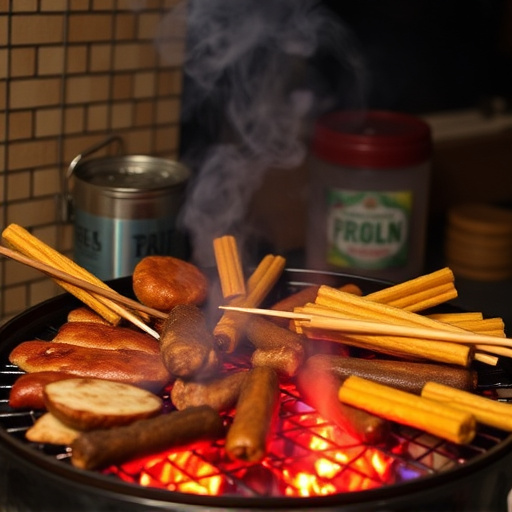
Achieving perfectly chopped meat is an art in itself and a key element for any classic southern-style chopped barbecue recipe. The technique involves more than just slicing and dicing; it’s about understanding the muscle structure of the meat and how to break it down while retaining its tender, juicy essence. Start by selecting high-quality, well-marbled cuts like brisket or pork shoulder, ensuring each piece is evenly sized for even cooking. Use a sharp, heavy-duty knife, ideally a butcher’s knife, to make clean, consistent cuts. Aim for 1/2-inch cubes, giving each bite a satisfying, meaty texture.
The chopping process should be quick and confident. Make sure your knife is always sharp—a dull blade can result in tough, stringy meat. Once chopped, give the meat a gentle toss to mix the pieces evenly, ensuring every mouthful has that perfect balance of flavors from the barbecue sauce and spices. This simple step ensures a uniform cooking experience, resulting in a mouthwatering chopped BBQ recipe that’s sure to impress.
Sauces: Classic vs. Modern Preferences
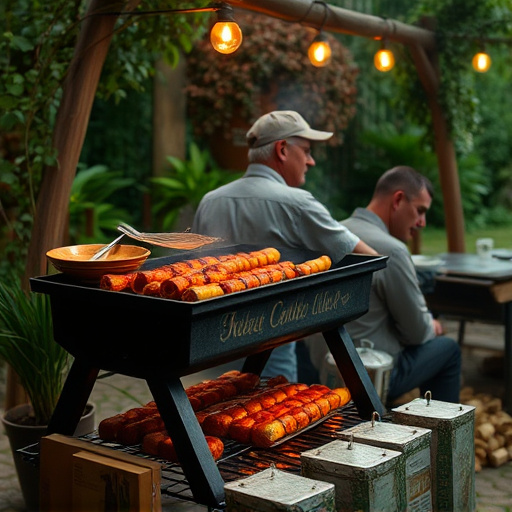
In the realm of chopped barbecue, the debate between classic and modern sauces is a topic that sparks passionate discussions among chopped BBQ recipe enthusiasts. Traditionalists often prefer the simplicity of a basic tomato-based sauce, allowing the quality of the meat to take center stage. This timeless approach lets the natural flavors of well-cooked pork or beef shine through, with a tangy twist from vinegar or mustard as the primary condiments.
On the other hand, modern preferences lean towards more adventurous and complex sauces. Incorporating diverse ingredients like honey, chili peppers, or even fruit purées adds layers of sweetness, heat, and acidity to the classic BBQ profile. These innovative combinations cater to evolving palates, offering a sensory experience that goes beyond traditional boundaries, while still paying homage to the beloved chopped BBQ recipe tradition.
Accompanying Side Dishes for a Complete Meal
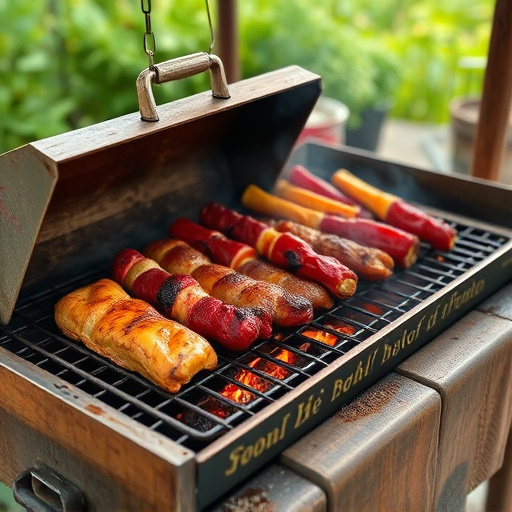
When serving a classic southern-style chopped barbecue, side dishes play a crucial role in completing the meal. Beyond the iconic sliced buns or collard greens, consider a few traditional companions to enhance the overall dining experience. Potato salad is a popular choice, its tangy dressing and creamy texture providing a refreshing contrast to the rich, smoky BBQ. Baked beans, another classic southern favorite, offer a hearty and sweet addition, with their molasses-infused flavor adding depth of taste.
For an extra crunch and burst of freshness, include some crispy potato wedges or fried onions as sides. These simple yet satisfying options not only complement the chopped BBQ but also cater to various preferences, ensuring every bite is a delightful blend of flavors. Remember, the key to a balanced barbecue spread is variety; these side dishes will surely make your classic southern-style chopped BBQ recipe stand out.
Tips for Portioning and Serving
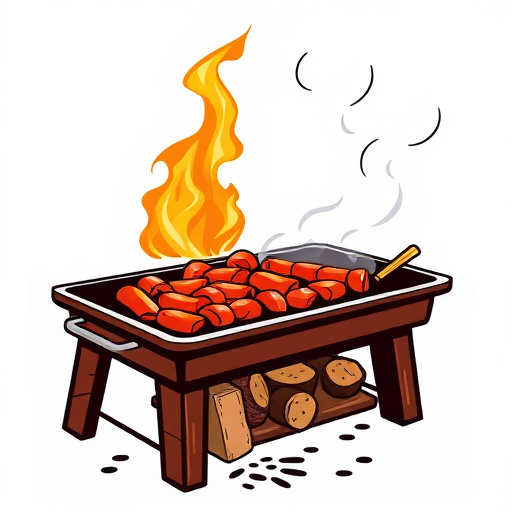
When serving a classic southern-style chopped barbecue, portioning is key to ensuring everyone enjoys a delicious and satisfying meal. For a main course, aim for approximately 1/2 pound (or 225 grams) of cooked meat per person, allowing for some extra to share. This amount can be adjusted based on the number of sides and other factors like age and appetite. The classic pairing is usually served over fresh, crispy coleslaw and accompanied by warm cornbread or buns.
For a balanced plate, consider adding a generous helping of sides, such as baked beans, potato salad, or grilled vegetables. You can also offer a variety of sauces on the side for personalized flavor profiles—some prefer tomato-based barbecue sauce, while others enjoy a tangy vinegar-based option. This flexibility ensures that every guest can customize their chopped BBQ experience to their liking.
Storing and Reheating Your Chopped BBQ
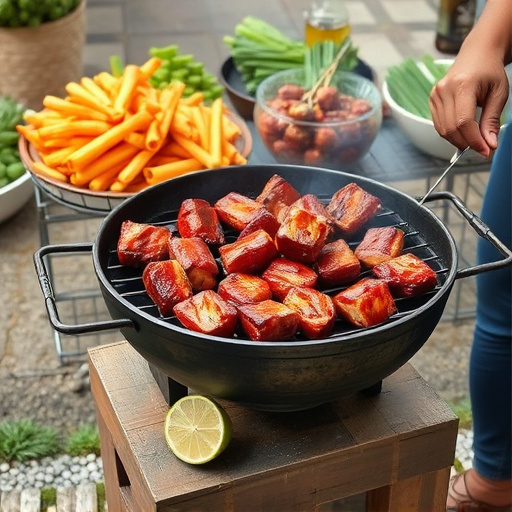
When it comes to storing your chopped BBQ, the key is to keep it fresh and maintain its flavorful quality. Transfer the barbecue meat to an airtight container and store it in the refrigerator for up to 4 days. For longer-term storage, freeze individual portions in sealed containers or freezer bags; this can preserve the dish for up to 3 months. Reheating is best done in a preheated oven at 350°F (175°C) for about 20 minutes, ensuring it reaches an internal temperature of 165°F (74°C). This method retains the texture and flavors while keeping the BBQ safe to eat. For optimal results, reheat in batches to avoid overcrowding the dish, which can result in a soggy texture.
